After a long winter’s nap, pollinators are slowly starting to emerge. Conserving these creatures is vitally important, as the health of our ecosystems hangs in the balance. So, why not give them a warm welcome from their slumber with a pollinator-friendly plant? Our horticulturists chose their top five annuals to share with you this year! These plants were chosen for a reason… most of them have grown well in the Garden or have been ‘fan favorites’ with visitors and are not easy to find at local nurseries. And most importantly, they are pollinator-friendly, too.
Preview some of our favorite plants below and get them at our Plant Sale:
Lion’s Ear
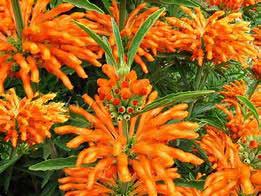
Horticulturist Pick: Lindsay Hendricks
Botanical Name: Leonotis leonurus
Common Name: Lion’s Ear
Habit: Annual
Size: 6-8 ft. tall, 2-3 ft. wide
Light: Full Sun
Bloom Time: July to frost
Orange, tubular flowers appear in tiered whorls encircling square stems, resembling a lion’s mane, while the hanging flower petals resemble a lion’s ears. Flowers attract hummingbirds and a myriad of other pollinators. It blooms late summer into fall when it’s started early indoors. Lion’s Ear grows best in summer heat, full sun and with regular watering. It also benefits from staking or support in areas that receive strong winds. If its seed heads are allowed to mature, it may self-sow.
Why I chose this plant: This plant gets huge and it’s a hummingbird magnet! I save these seeds annually from the Rose Cottage Garden — a process I began when I started working here more than ten years ago.
Fireworks Gomphrena
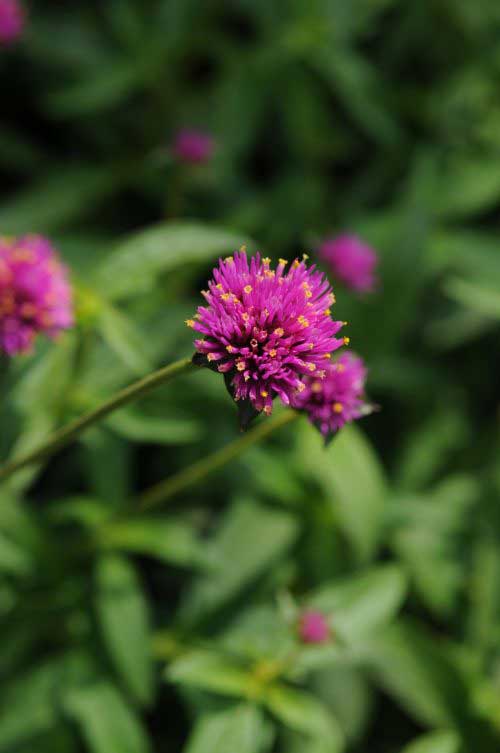
Horticulturist Pick: Alyssa Giese
Botanical Name: Gomphrena pulchella ‘Fireworks’
Common Name: Fireworks Gomphrena
Habit: Annual
Size: 4 ft. tall, 4 ft. wide
Light: Full Sun
Bloom Time: Late Spring to Fall
Fireworks Gomphrena has many long-lasting, hot pink flowers tipped with bright yellow. It has more blooms per plant than other gomphrenas, and it has a unique scaffolding habit. This plant is described as being “tough as nails” because it’s drought tolerant and low maintenance. The flowers of the Fireworks Gomphrena attract bees and butterflies. Fresh or dried flower arrangements are paired nicely with these blooms!
Why I chose this plant: It has unique blooms that are great for cut flower bouquets and also dry very well. It provides a different architectural element to landscapes while attracting pollinators.
Raspberry Archangel™ Angelonia
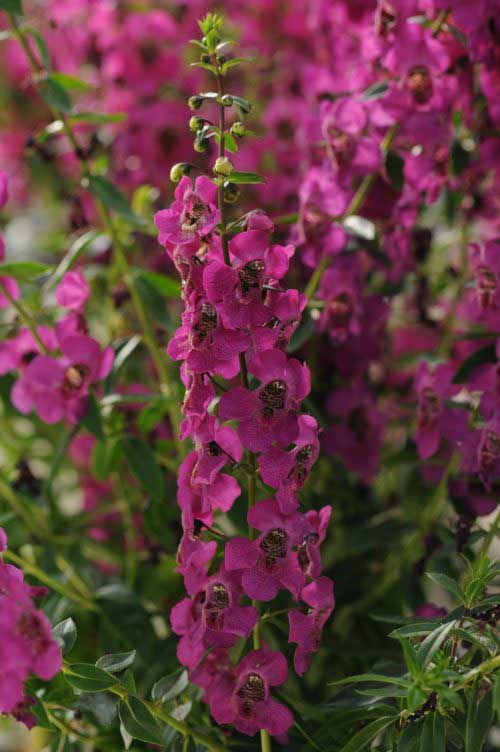
Horticulturist Pick: Ashley Barkow
Botanical Name: Angelonia angustifolia ‘Balarcaspim’
Common Name: Raspberry Archangel™ Angelonia
Habit: Annual
Size: 12-14 in. tall, 10-12 in. wide
Light: Full Sun
Bloom Time: June till frost
The Raspberry Archangel™ Angelonia produces huge flowers that are vibrant against glossy dark green leaves. They thrive in extreme heat, humidity and drought. Excellent landscape performance is also something they excel at, and they only need deadheading once or twice during the active growing season.
Why I chose this plant: It’s an excellent performer that demands very little maintenance. It grew to its mature size quickly and held on to its vibrant pink color all season long.
Profusion Red Zinnia
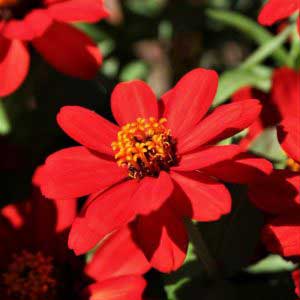
Horticulturist Pick: Kate Miller
Botanical Name: Zinnia ‘Profusion Red’
Common Name: Profusion Red Zinnia
Habit: Annual
Size: 8-14 in. tall, 12-15 in. wide
Light: Full to Part Sun
Bloom Time: Late Spring to Fall
The long lasting, true red blooms of Profusion Red Zinnia refuse to fade in the heat of summer. Blooming from late spring to frost, it’s an excellent choice for both containers and garden beds as well as the cutting garden. In addition to being tolerant of drought, wind and rain, it’ll also attract butterflies and birds!
Why I chose this plant: The true red blooms can’t be matched! It’s covered with eye-catching blooms all season long, is easy to grow from seed and virtually maintenance free.
Gold Landmark™ Lantana
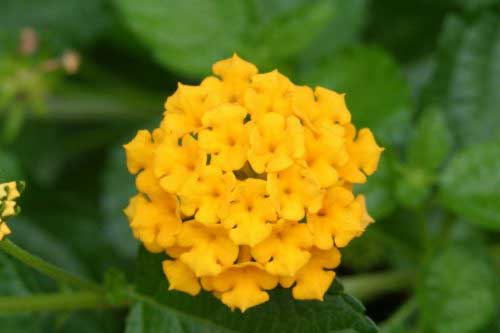
Horticulturist Pick: Mark Konlock
Botanical Name: Lantana camara ‘Balandgold’
Common Name: Gold Landmark™ Lantana
Habit: Annual
Size: 15-20 in. tall, 18-24 in. wide
Light: Full Sun
Bloom Time: All Summer
Balls of golden flowers cover this vigorous growing, heat- and drought-tolerant mounding annual. Gold Landmark™ can be added to your garden bed, or used in containers to give you a pop of color. As a bonus, the scented foliage makes it deer resistant.
Why I chose this plant: Hey, we’re from Green Bay, this is the perfect Packers plant – green and gold! Not only do its colors stay true, it’s also a fan of pollinators, attracting butterflies, hummingbirds and other nectar sippers!
Flowering Tobacco
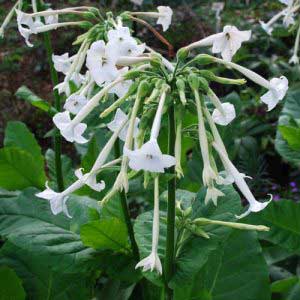
Horticulturist Pick: Ryan Hammes
Botanical Name: Nicotiana sylvestris
Common Name: Flowering Tobacco
Habit: Annual
Size: 3-5 ft. tall, 1-2 ft. wide
Light: Full Sun to Part Shade
Bloom Time: Summer to Fall
Flowering tobacco is a vigorous plant with beautiful trumpet-shaped flowers. As it blooms from summer through fall, it provides good color and fragrance throughout the garden. It also serves as an attractive nectar source for butterflies and hummingbirds, given the flower shape. This plant grows best in rich, well-drained soil with afternoon shade in hot summer climates. You should deadhead spent flowers for continuous blooms.
Why I chose this plant: Its accelerated growth and shooting star-like flower form is perfect for attracting butterflies. This plant is not as well-known as other annuals and deserves recognition for its attractive performance.
Pink Morn Opera Supreme™ Petunia
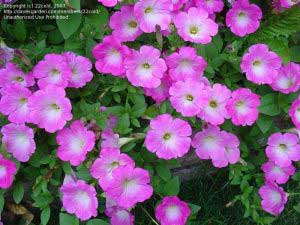
Horticulturist Pick: Sarah Pingel
Botanical Name: Petunia ‘Pink Morn’ Opera Supreme™
Common Name: Pink Morn Opera Supreme™ Petunia
Habit: Annual
Size: 6 in. tall, 24 in. wide; trailing habit
Light: Sun to Light Shade
Bloom Time: Spring to Fall
Pink Morn Opera Supreme™ is packed with two-inch blooms of pink with a white halo and yellow center from its start to finish. It requires little maintenance, other than general watering and fertilizing. This free-flowing, trailing plant is great either in the ground — creating a mat of blooms — or in a container, creating a waterfall effect.
Why I chose this plant: It’s a show-stopping petunia overflowing with white throated pink flowers. Plus, it’s a 2007All-America Selections Winner, which means it has been through the wringer with testing and trialing.
Check out these pollinator plants, veggies and other annuals at our Plant Sale (in lieu of Garden Fair being canceled) from 9 am-5 pm daily, starting Friday, May 29 for members and Monday, June 1 for the general public.





